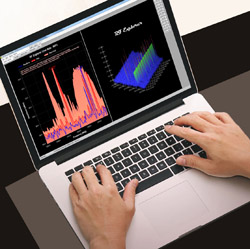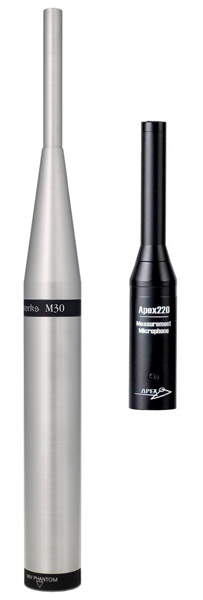
Making Connections
At shows, the main audio computer is positioned where it can be easily viewed, working with a wireless mouse for control. We have a few ways of routing audio out of the computer.
The approach for some time was to utilize a Focusrite Scarlett 8i6, an 8-input/6-output interface with two XLR inputs and two TRS balanced outputs. It required downloading Scarlett software on my computers and carrying around a set of TRS-to-XLR adapter cables.
The cool thing is that the 8i6 offers a S/PIDF digital output, but the not-so-cool thing is that most modern consoles have omitted a S/PDIF input in favor of more standard digital connections like Dante and AES.
My new favorite analog interface is the USB-P from Peavey. It’s a compact box that plugs into a USB port and shows up on any computer as stereo outputs. It also has a stereo to mono switch, so it can run a single channel if that’s all that is available. The USB-P has two XLR outputs and is powered by the USB port.
The headphone jack on the playback computer also gets some use when the USB-P is needed for a client’s computer or for connecting to graphics/video playback machines. We carry 1/8-inch TRS-to-dual-RCA cables with RCA-to-1/4-inch and RCA-to-XLR adapters to link the headphone jack to the console.
On a recent freelance gig, the A/V company deployed several Switchcraft 318 Mini AudioStix to serve as DIs on the podium. The 318 is a (very) compact unit with a 1/8-inch stereo jack on one end and a single XLR on the other, joined by a volume control and ground switch. It converts a stereo signal to balanced mono mic level output. I was so impressed with the quality and small size that I added a few to our inventory, where they’ll come in quite handy when we need to get audio from a laptop or mobile device into a single channel of a console.
There’s also interfacing with Dante networks; we’ve been using Dante Virtual Soundcard for a few years now, carrying 5- and 10-foot Cat-5e cables as well as a compact 5-port Netgear gigabit switch for quick and easy interconnect. Both of our primary laptops at shows have Dante controller installed and can be linked to the network to patch inputs.
We also run the newer Dante Via, which provides access to any audio device on my computer, internal or external, into a Dante network. If desired, we can connect the computer’s microphone jack into the network, but prefer using the computer’s headphone jack to monitor Dante channels, particularly handy for troubleshooting and/or when it’s a larger network.

More Bang For The Buck
On fly dates where a primary objective is keeping gear weight as low as possible, I carry an Icicle USB converter from Blue Microphones to feed analog audio to the laptop. A small, light, single-channel unit, it works well in addition to providing phantom power. Normally it’s deployed with measurement mics.
Speaking of which, our computers are also loaded with both Rational Acoustics Smaart and AFMG SysTune platforms for measurement and analysis. I usually gravitate toward SysTune but many techs prefer Smaart, so our choice is both. Measurement mics are usually M30s from Earthworks, but when space is extra tight, the choice is the miniscule Apex220.
Yet another big computer application is managing wireless systems. While most music shows only use a handful of channels, corporate events can occupy a considerable number of frequencies throughout a venue when you factor in a general session, breakout rooms and production crew communications.
A lot of my company’s work is in Las Vegas at casino/resort ballrooms, where there may be an in-house show right next door that has dozens to hundreds of frequencies already in use. Therefore, frequency coordination is especially crucial. To check the airwaves we deploy a compact stand-alone spectrum analyzer called RF Explorer, available from several sources. (Ours was acquired from NutsAboutNets.com.)
